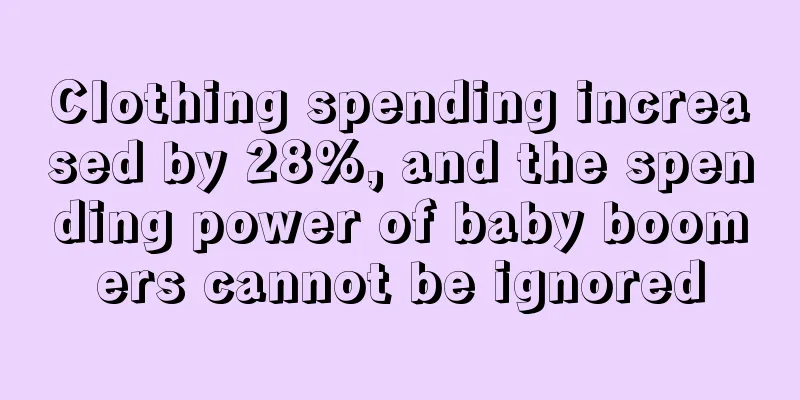Clothing spending increased by 28%, and the spending power of baby boomers cannot be ignored

|
According to NPD, from January to July 2021, American baby boomers' spending on clothing increased by 28% compared with pre-pandemic 2019. Although most generations have increased their spending in the clothing market, the growth rate of baby boomers' spending is five times that of millennials and more than twice that of Generation Z.
The fastest growing categories among baby boomers over the past 12 months were comfort, basics, sleepwear, activewear, etc. This suggests that baby boomers are updating the clothing in their wardrobes.
NPD also found that before the epidemic, 82% of baby boomers went to physical stores to buy clothes, but with the closure of a large number of physical stores last year, many people began to learn and adapt to online shopping.
Baby boomers accounted for $1 of every $5 spent on online apparel in the past year , and their online apparel spending is growing faster than any other generation.
Although in-store purchases remain the primary way baby boomers shop as retailers have returned to physical stores as they reopened this year, the online shopping habits developed during the epidemic will not be completely abandoned by this group.
Most brands and retailers like to focus on Millennials and Gen Z, but Baby Boomers shouldn’t be ignored, NPD said.
In the United States, baby boomers refer to people born between 1946 and 1964. Data shows that the total number of babies born during the baby boom period is close to 79 million, far exceeding the previous silent generation and the 55 million of Generation X that followed.
Although this number is expected to drop to 72 million and the number of millennials has exceeded that of baby boomers, baby boomers still have a large population base and sufficient purchasing power when it comes to influencing the US economy.
Data shows that the average online shopping spend of baby boomers is $203 per transaction, far exceeding the consumption of millennials. Baby boomers do not care much about price when shopping online. In fact, 77% of baby boomers will buy products based on the value they bring. Nearly half of baby boomers will search for product recommendations and reviews online, or conduct research on the brand's official website before purchasing.
Therefore, if sellers want to attract consumers in this age group, effectively communicating the advantages and value of the product may be a good idea. USA Clothing expenses |
<<: AliExpress opens service center in Russia
>>: Amazon cooperates with the UK Post Office; "North American Alipay" Square launches Cash App Pay
Recommend
Sellers applaud! A breakthrough has been made in this pain point of the Latin American market
For cross-border sellers, the pessimistic market ...
With more than 2,000 overseas warehouses, my country's import and export volume will reach 6 trillion US dollars in 2021!
Data from the Ministry of Commerce show that from...
What is Lamicall? Lamicall Review, Features
Lamicall is a brand whose main products are stands...
Delivery delays at more than 10 Amazon warehouses! Snowstorm hits US logistics hard
By the end of February, spring had already arrive...
Japan's state of emergency will be extended until June 20!
According to Japan's NHK TV, the Japanese gov...
Loss of 4 million, orders dropped to freezing point! Sellers fall into darkness before Black Friday
It is now late November, the traditional peak sea...
Attention! Many European countries were hit by strong storms, ports were closed, and flights were suspended
According to foreign media reports, on February 1...
Big reversal! The United States lifts the ban on Shenzhen's big sales
Previously , the US ban on China's DJI drones...
DHL predicts that the B2B e-commerce market will reach US$20.9 trillion in 2027
According to foreign media reports, DHL, the worl...
What is Haojie Logistics (Haojie Group International Logistics Co., Ltd.)? Haojie Logistics (Haojie Group International Logistics Co., Ltd.) Review, Features
Haojie Logistics (Haojie Group International Logi...
eBay Mexico's first quarter sales data released these two categories have the fastest sales growth!
eBay Mexico sales data for the first quarter of 2...
What is Fanyuan International? Fanyuan International Review, Features
Hangzhou Fanyuan International Logistics Co., Ltd....
After working alone for 4 years, I bought a car and a house in Shenzhen. The current living situation of Amazon sellers
Some Amazon sellers bought cars and houses in She...
What is Discogs? Discogs Review, Features
Discogs is a Portland-based music website that is...
Surpassing Temu, SHEIN has the highest appearance rate in TikTok topics!
Since appearing on TikTok , shopping unboxing vid...









